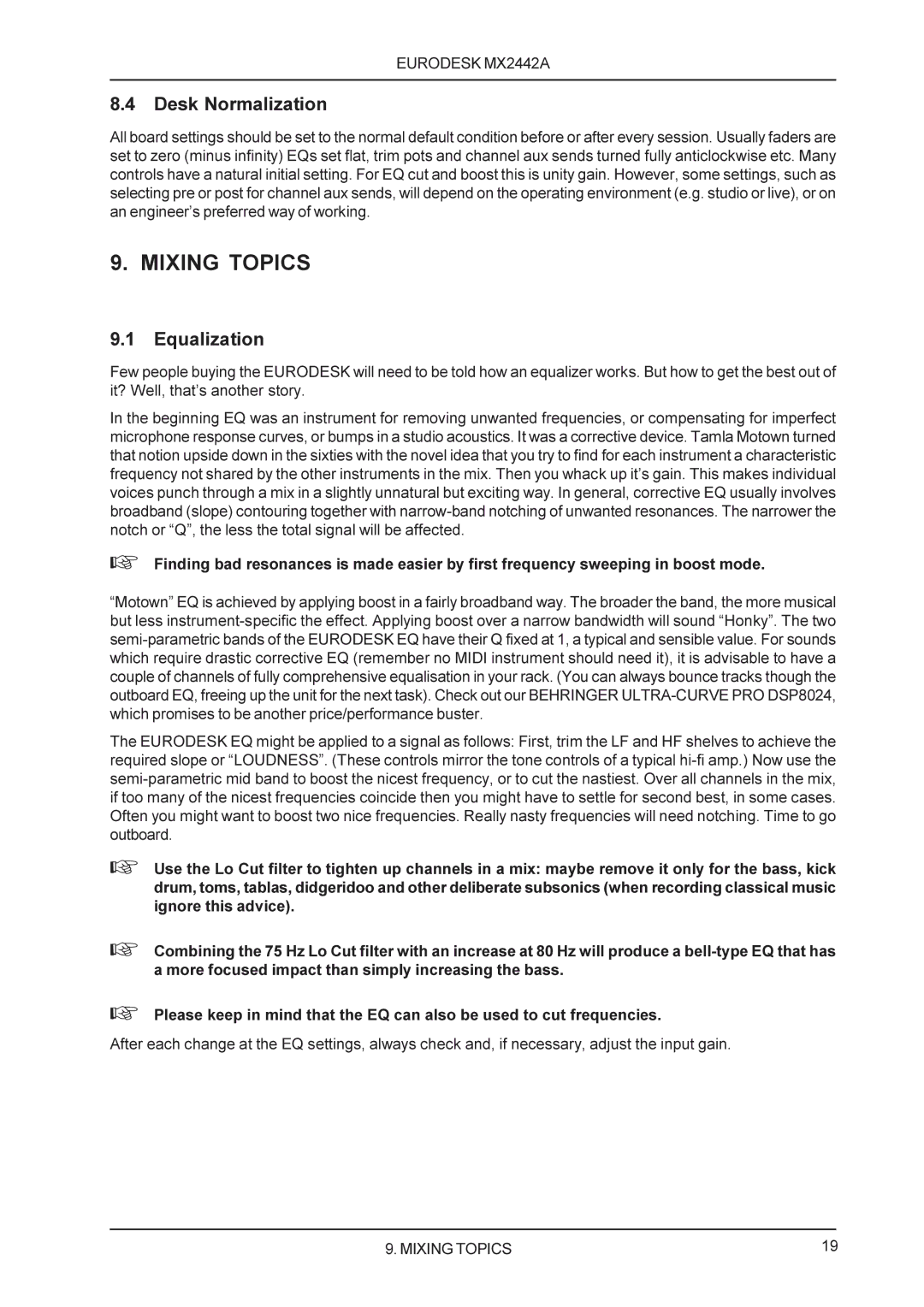
EURODESK MX2442A
8.4 Desk Normalization
All board settings should be set to the normal default condition before or after every session. Usually faders are set to zero (minus infinity) EQs set flat, trim pots and channel aux sends turned fully anticlockwise etc. Many controls have a natural initial setting. For EQ cut and boost this is unity gain. However, some settings, such as selecting pre or post for channel aux sends, will depend on the operating environment (e.g. studio or live), or on an engineer’s preferred way of working.
9. MIXING TOPICS
9.1 Equalization
Few people buying the EURODESK will need to be told how an equalizer works. But how to get the best out of it? Well, that’s another story.
In the beginning EQ was an instrument for removing unwanted frequencies, or compensating for imperfect microphone response curves, or bumps in a studio acoustics. It was a corrective device. Tamla Motown turned that notion upside down in the sixties with the novel idea that you try to find for each instrument a characteristic frequency not shared by the other instruments in the mix. Then you whack up it’s gain. This makes individual voices punch through a mix in a slightly unnatural but exciting way. In general, corrective EQ usually involves broadband (slope) contouring together with
+Finding bad resonances is made easier by first frequency sweeping in boost mode.
“Motown” EQ is achieved by applying boost in a fairly broadband way. The broader the band, the more musical but less
The EURODESK EQ might be applied to a signal as follows: First, trim the LF and HF shelves to achieve the required slope or “LOUDNESS”. (These controls mirror the tone controls of a typical
+Use the Lo Cut filter to tighten up channels in a mix: maybe remove it only for the bass, kick drum, toms, tablas, didgeridoo and other deliberate subsonics (when recording classical music ignore this advice).
+Combining the 75 Hz Lo Cut filter with an increase at 80 Hz will produce a
+Please keep in mind that the EQ can also be used to cut frequencies.
After each change at the EQ settings, always check and, if necessary, adjust the input gain.
9. MIXING TOPICS | 19 |
